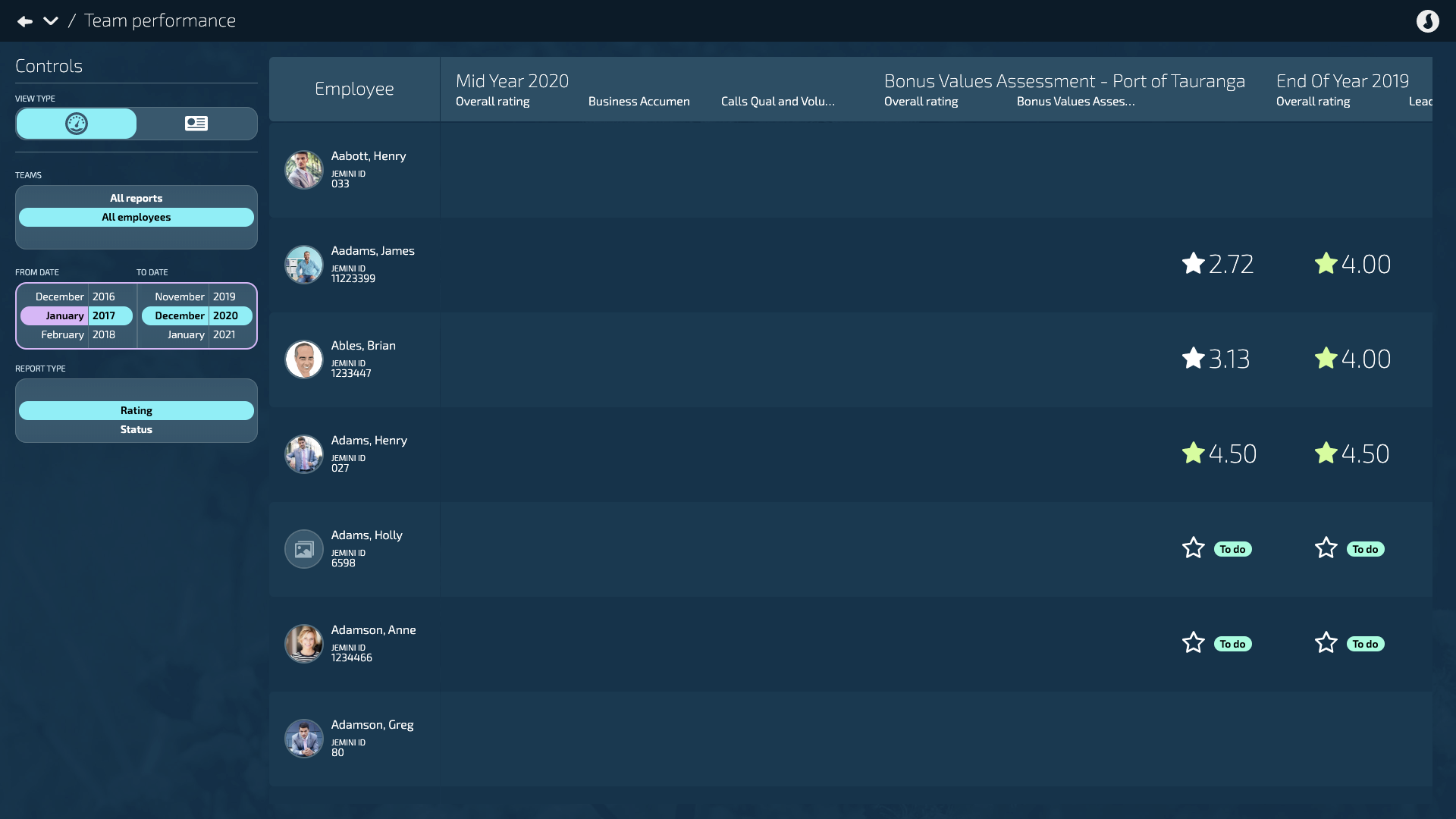Remote working is now a non-negotiable fact of life for businesses across the world. The COVID-19 pandemic just accelerated a trend that was already well underway and proved just how effective remote-working can be. What’s more, having tasted a new kind of working life, one that offers more work-life balance and the ability to give up dreaded commutes, there’s no going back for huge swathes of the workforce.
Your people want and need a great remote-working experience and that’s why we’ve created the Remote-workers’ bill of rights. A 10 Commandments for the hybrid-workforce that serves as a practical guide to delivering the right employee experience whilst harnessing maximum productivity.

1. Thou shalt have the right equipment
It goes without saying, you need to ensure that everyone working from home has access to the right equipment. It’s not about wasting money on things that you don’t need, but it absolutely is about ensuring everyone has everything they need to work just as productively as when they’re in the office. The small touches can make teams feel valued and show that you care for their comfort and wellbeing. So if you can give them that second monitor and a wireless keyboard and mouse, do it. Don’t forget about the health and safety responsibilities to your workforce. Your people might be working in their own environment, but there’s a good chance it’s your responsibility to check that they are following health and safety good practice and sitting in a chair that’s not going to adversely affect their posture. With all the Zooming and Teaming we’re doing these days, you might want to control what is seen behind your people to maintain professionalism. After all not everyone wants to see your team’s dirty laundry air-drying in the distance. Create a professional background for all, or even give people a retractable branded banner to use during professional calls. It’s low cost — but high impact.
2. Thou shalt hear properly and be heard
Audio quality during remote conversations is key. One of the biggest pet-hates people have for Zooming and Teaming is the inconsistency in audio quality. The culprit is usually background noise or reliance on the microphones and speakers built into computers and laptops. Invest in high quality audio headsets for people — so they look the part and sound the part too. Whilst you might be presenting live from an all-singing, all-dancing private home-office, your colleagues might be joining from an open-plan apartment, where the kids are watching the Simpsons and the whine of the washing machine is drowning out every other word. This is real-life for the majority of people. So avoid any embarrassment or intrusion with a good headset — and one with built-in noise cancellation is even better.

3. Thou shalt keep performance under control
It’s not a matter of “out of sight, out of mind” - you can replicate the same high-performance mindset with your remote-working teams. You can achieve this through regular engagement via your performance management software or performance appraisal system. As always, keep open lines of communication with your people and schedule in performance reviews little and often to make sure work and deliverables are going in the right direction. Shared efficiency dashboards are a great idea (e.g. using Microsoft Power BI) that allows everyone to see their shared performance against targets and key performance indicators. These can be easily connected to your internal communications software like Microsoft Teams, so that every win is shared and recognised by everyone. The key is to keep with the same diarised and automated employee performance management approach that you already use in the office. You just need to adapt it slightly, substituting face-to-face catch-ups for virtual ones. Add a personal touch to these performance appraisals by popping a handwritten note and some chocolates in the post. What a lovely surprise!
4. Thou shalt trust your people
Many managers and leaders have really had to adapt to this new hybrid way of working. For some, they are used to the tried and tested strategy of ‘management by walking around’. When you’re in the office, the physical presence of the manager is felt by teams and vice-versa. In a remote-working setup, it can create feelings of doubt for managers. You’ve probably asked yourself: “what are my people doing?”, “where are they?”, “are they secretly at the gym?”, “is all our productivity going down the drain?” These feelings or doubts are natural — we’re all human after all. Adapting to a new way of working has meant that leaders, managers and employees have had to develop a new kind of psychological contract with each other. It means you need to take a leap of faith and trust people, in the same way you trust them when working in the office. You don’t look over the shoulder of your people in the office and there’s no need to do the same now either. Technology can help give you clear visibility and evidence of working hours. Consider a cloud based attendance system or employee time tracking software. This payroll time and attendance can give you the comfort that you need, without being intrusive for your people. In fact this can serve a dual purpose. It can give management the comfort that people are starting and finishing at the right time, whilst enabling people to show impartial evidence that they are doing the right thing.

5. Thou shalt not micromanage
When you’re not seeing your teams regularly face-to-face, it can be easy to resort back to a micromanagement style of leadership. It’s not surprising — your people are most likely working alone without the regular natural conversations that happen in the physical workplace. In the office, even when you’re not directly engaged in conversation, there is always that awareness you build up by being party to conversations that you might not be directly involved in. As a manager or leader, you often feel the need to give your people very direct instructions so there’s no mix-up, confusion or crossed wires. It’s important to be self-aware and nip these micro-managing behaviours in the bud. Instead, schedule regular stand-up meetings at the beginning and end of each day (or at the beginning or end of each week). This allows you to run through objectives, goals and the line-by-line detail needed to keep work progressing as it should. Micromanagement is one of the factors affecting performance and can have a negative effect — so keep it in check.
6. Thou shalt focus on outputs, not processes
One thing you should question is the relative importance of output over process. If someone is continually performing well, being highly productive and delivering business outcomes, does it really matter what it took to get them there? Individuals will have their own ‘best ways’ of getting things done. When work is done outside of the office, it’s only natural that there be a slightly different structure to the day. Parents might take their children to school and pick them up. Someone might go and exercise for an hour. The hybrid-working and remote-working revolution has shown that people have an incredible ability to structure multiple commitments and different ways of working whilst delivering outstanding work. Think about employee engagement and the experience you deliver to your people. If you can be flexible (within reason), you’re going to bring out their best performance and efficiency. They’ll respect the freedom they’re given to get the job done and will reciprocate by being flexible and loyal advocates for your organisation. So focus on outputs and business outcomes, not just process.

7. Thou shalt not be endless
With the ubiquity of always-on technologies, it’s important to define structured working hours that you share as a team. You’ll no-doubt have read that some people struggle with digital addiction. They spend all day working in a computer-led environment. Then they spend the evening scrolling through social media feeds and watching content on yet another screen. For your team’s long term health and wellbeing, set an example and make it ‘ok’ to switch off between certain hours. People tend to take the lead from their line-managers or senior managers. When managers use instant-messaging platforms like Microsoft Teams outside of hours, it can make people feel obliged to read and respond to these messages, even late at night. The same goes for email. Set boundaries and lead by example. Don’t let this go unspoken — have a clear and openly talked about policy that gives people the right to turn off. This is even more important for people who work from home. When the line between the workplace and the home and family place is blurred, its even more important to give people permission to switch between their work, family and personal personas.
8. Thou shalt keep in touch (regularly)
Achieving just the right balance of communication isn’t easy. You don’t want people to be isolated and feel they’re not getting the support that they need. Meanwhile, you don’t want people to feel that they’re being pressured or micromanaged. A common sense approach is needed. In a lot of workplaces, technology is helping to replicate the informal conversations that might have happened in the canteen or by the water cooler. Getting together as a team with some real ‘Face-Time’ can be a great way to achieve this. When it’s a group call, it takes away some of the pressure. Regular catch-ups to discuss work are highly recommended. Some teams love to meet each morning and share what they’re working on and what they have achieved. It serves as a ‘show and tell’ where work in progress can be shown and constructive feedback shared. As a manager or leader — use your emotional intelligence. Be aware of who the dominant talkers are — and don’t forget to include everybody. Use your employee performance management software to schedule follow ups and 1-2-1s with people who you feel might be a little un-engaged. It could be that they’re a little shy or could be a sign of disengagement or perhaps a personal issue. Follow the right HR protocols — and offer the help and support that forms part of your wider employee wellbeing offer.

9. Thou shalt be inclusive
Remember to treat everyone equally, whether they’re home-based, remote-based or office based. You’ve probably worked hard and long to build your workplace culture from scratch. When you’re geographically spread as a team, the last thing you want is for that community spirit to become diluted. And you certainly don’t want an ‘US vs THEM’ type mentality. You need all your people to feel equally engaged and respected irrelevant of where they’re located. That means ensuring office based perks find their way to people at home. Maybe that means giving remote-workers the ability to claim towards gym-membership or a coffee-voucher for their local coffee shop (after all, if you’ve got a fancy coffee machine in the office, you’re likely to crave a Caramel Spiced Latte even when you’re working from home). Think inclusive and you can’t go wrong.
10. Thou shalt entertain
The laughter, jokes and memorable moments from the office can’t be lost. Those are the lighter moments that make work fun and build strong, cohesive teams. The most engaging businesses have found clever and resourceful ways to bring their people together. Here at Fusion5 — some of our teams have been meeting for a virtual quiz once a week — and it’s been an unmissable occasion. What about a bake-a-long — or a virtual chocolate-making masterclass. Your people get to share their skills, get messy and have a well-earned laugh along the way. It doesn’t need to be a big ticket event — just something that gets people together and gets people talking.




